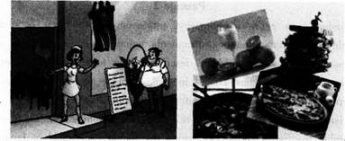33.设计任务:请阅读下面学生信息和语言素材,设计一个30分钟的阅读训练活动。
教案没有固定格式.但须包含下列要点:?
teaching objectives
teaching contents
key and difficult points
major steps and time allocation
activities and justifications
教学时间:30分钟?
学生概况:某城镇普通中学高中一年级第一学期学生,班级人数40人。多数学生已经达到《普通高中英语课程标准(实验)》五级水平。学生课堂参与积极性一般。
语言素材:?
Wang Peng sat in his empty restaurant feeling very frustrated. It had been a very strange morning. Usually he got up early and prepared his menu of barbecued mutton kebabs, roast pork,stir-fried vegetables and fried rice. Then by lunchtime they would all be sold. By now his restaurant ought to be full of people. But not today! Why was that? What could have happened? He thought of his mutton, beef and bacon cooked in the hottest, finest oil. His cola was sugary and cold, and his ice cream was made of milk, cream and delicious fruit. "Nothing could be better," he thought.
Suddenly he saw his friend Li Chang hurrying by. "Hello, Lao Li," he called. "Your usual?" But Li Chang seemed not to hear. What was the matter? Something terrible must have happened if Li Chang was not coming to eat in his restaurant as he always did.
Wang Peng followed Li Chang into a new small restaurant. He saw a sign in the window.
Tired of all that fat? Want to lose weight?
Come inside Yong Hui's slimming restaurant.
Only slimming foods served here.
Make yourself thin again!
Curiosity drove Wang Peng inside. It was full of people. The hostess, a very thin lady, came forward. "Welcome," she said. "My name is Yong Hui. I'll help you lose weight and be fit in two weeks if you eat here every day." Then she gave a menu to Wang Peng. There were few choices of food and drink on it: just rice, raw vegetables served in vinegar, fruit and water. Wang Peng was ama